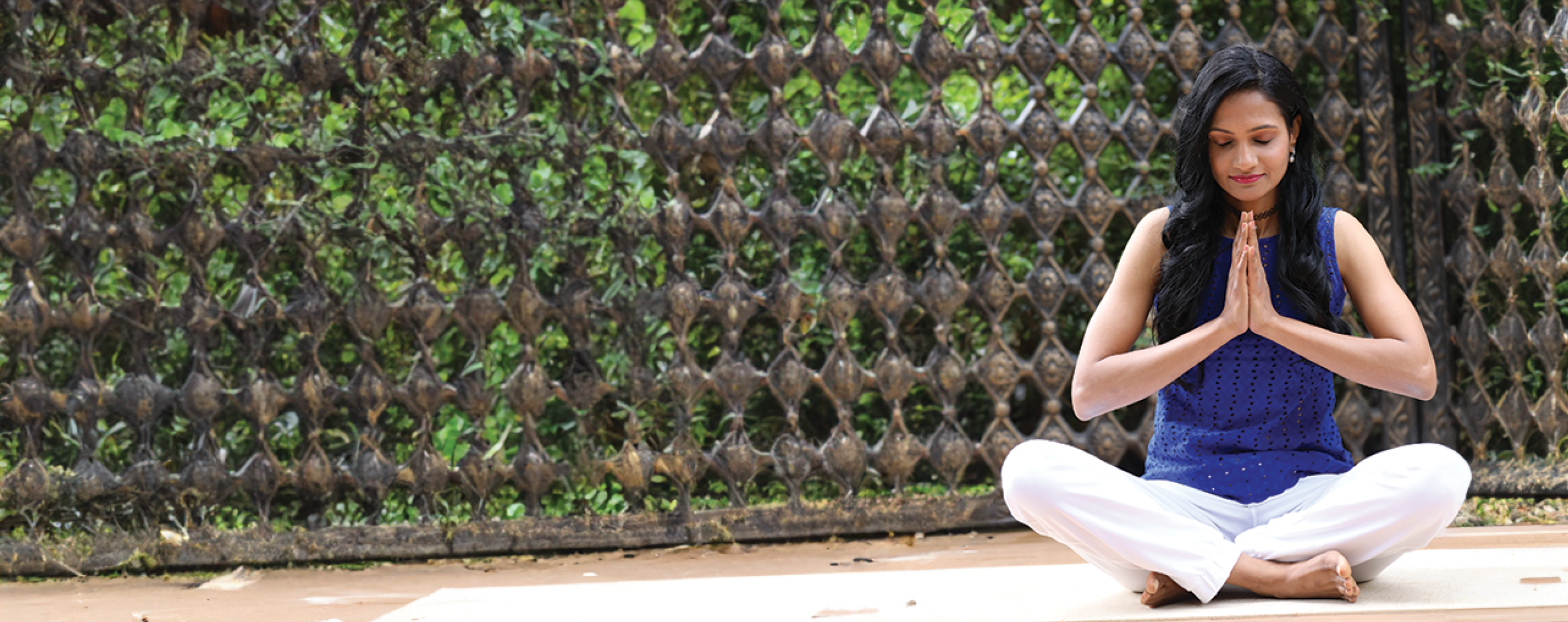Pelvic Floor Exercises: Strengthen Your Foundation with Yoga
Improve Core Strength & Pelvic Health with Simple Yoga Techniques


The pelvic floor is a set of muscles that forms the foundation of your core. It plays a crucial role in bladder control, posture, sexual health, and core stability—yet it’s often overlooked in mainstream fitness routines. For women especially, these muscles can weaken due to pregnancy, childbirth, aging, or sedentary lifestyles, leading to issues such as urinary incontinence, lower back pain, or pelvic organ prolapse.
At Trimuk Yoga, under the guidance of Radhika Bargava, India Excellence Award 2024 winner and renowned yoga and nutrition coach, we believe in empowering women through mindful movement. In this blog, we will explore how pelvic floor exercises, especially when practiced through yoga, can help restore strength, flexibility, and confidence.
The pelvic floor is a group of muscles and ligaments stretching like a hammock across the base of the pelvis. These muscles:
When functioning optimally, the pelvic floor contracts and relaxes in coordination with other muscles in the body. Weak or tight pelvic floor muscles can create imbalances that affect daily life.

Pelvic floor strengthening isn’t just for postpartum women—it benefits:
At Trimuk Yoga, our approach blends traditional yoga with therapeutic alignment, making these exercises accessible and effective.
A strong pelvic floor helps prevent involuntary leaks during coughing, sneezing, or lifting.
Improved blood flow and muscle tone can lead to better sensation and function.
During pregnancy, it helps support the growing uterus; post-birth, it aids recovery and healing.
The pelvic floor is part of the deep core system, along with the diaphragm and transverse abdominis.
Regular activation and awareness prevent pelvic organ prolapse, especially with age or after childbirth.

Yoga offers a gentle yet powerful way to connect with and activate the pelvic floor. Here are some of the most effective pelvic floor yoga exercises taught at Trimuk Yoga:
How to do it: Lie on your back with knees bent and feet hip-width apart. Inhale, engage your core and pelvic floor, and lift your hips. Hold and breathe.
How to do it: Stand with feet wide, lower into a squat, and bring palms together. Press elbows into knees and lift through the pelvic floor on each breath.
How to do it: On all fours, inhale and arch the spine (cow), gently lifting the pelvic floor. Exhale and round (cat), softening the pelvic floor.
How to do it: Lie on your back, bring soles of feet together, and let knees fall open. Place a bolster under the spine for comfort. Focus on soft belly breathing.
How to do it: Lie on your back, bend your knees, and hold your feet. Keep ankles above knees and gently rock side to side.
One of the most overlooked but powerful tools is breath. The diaphragm and pelvic floor move together. When you inhale, the diaphragm drops and the pelvic floor softens. When you exhale, the diaphragm lifts and so can the pelvic floor.
This builds coordination and helps prevent unconscious tension or weakness.

✅ Morning:
✅ Midday:
✅ Evening:
🧘♀️ Remember: consistency is key. These small moments of awareness add up to long-term strength.

It's not just about weakness. Some people have an overactive pelvic floor that is tight and unable to relax.
If you relate to any of these, consult a pelvic floor therapist. Trimuk Yoga’s therapeutic sessions can support recovery in tandem.
Led by Radhika Bargava, Trimuk Yoga offers:
Radhika’s approach integrates traditional Hatha Flow and Ashtanga principles with modern anatomy to help women feel empowered, connected, and supported through every life stage.
Your pelvic floor is your core foundation, and it deserves mindful attention. Whether you're preparing for childbirth, navigating postpartum recovery, or simply looking to deepen your connection to your core—pelvic floor exercises through yoga can transform your strength from the inside out.
At Trimuk Yoga, we’re committed to supporting you with accessible, compassionate, and evidence-based practices. Join us to experience the difference a strong foundation can make.
Take the first step—join Trimuk Yoga now and feel the shift from within.

A correct pelvic floor contraction feels like a gentle lifting and tightening of the muscles you’d use to stop the flow of urine or hold in gas—without tensing your belly, thighs, or glutes. In yoga, we combine breath awareness with subtle engagement to help you build mind-muscle connection.
At Trimuk Yoga, we guide you through these movements step-by-step using visualizations and alignment cues to ensure you’re activating the right muscles safely and effectively.
Consistency is key. We recommend:
You don’t need long sessions—small, regular practice is more effective than occasional intense effort. Our guided routines at Trimuk Yoga are beginner-friendly and designed to integrate easily into your day.
Yes—pelvic floor strengthening is one of the most effective natural remedies for urinary incontinence and bladder leaks. With regular practice, you can:
Our yoga-based approach not only strengthens but also releases unnecessary tension, creating balanced and responsive pelvic muscles.
Pelvic floor health is important for everyone, regardless of gender.
While Trimuk Yoga focuses on women’s wellness, men can also benefit from pelvic floor awareness to improve:
The same principles of breath, posture, and mindful movement apply.
Results vary from person to person, depending on consistency and initial muscle condition. Most people notice improvements in:
At Trimuk Yoga, we help you track progress gently—celebrating the small milestones along your journey to a stronger foundation.
